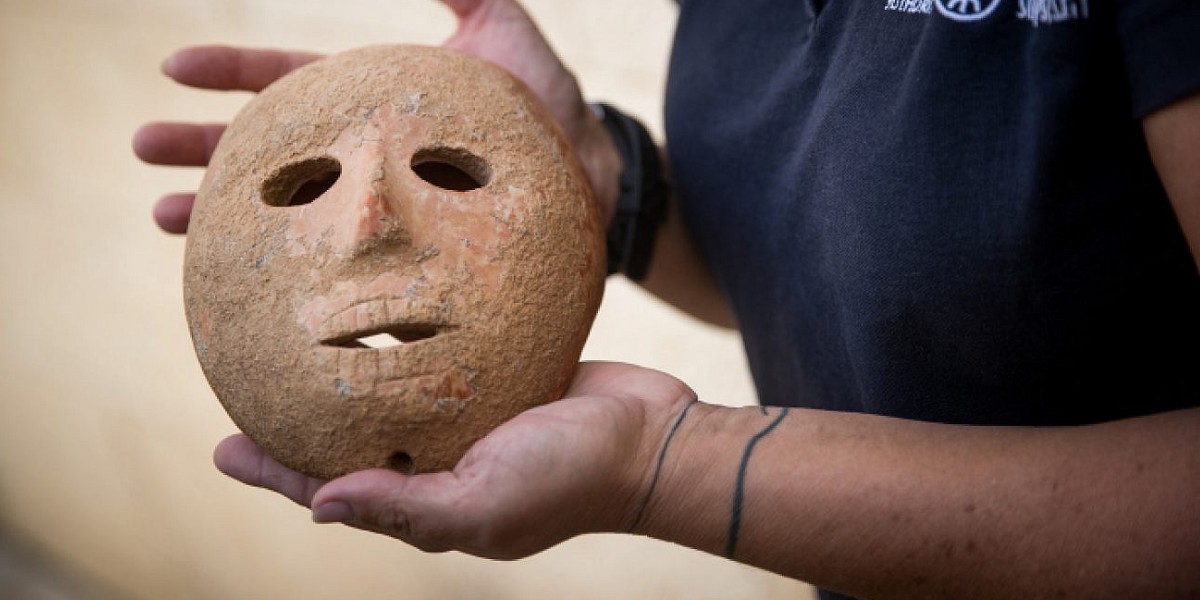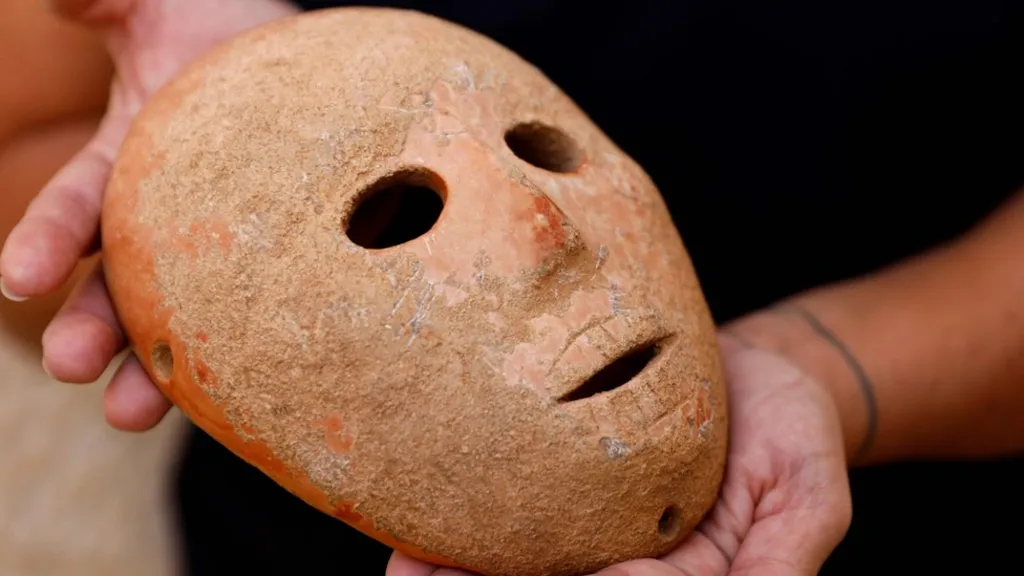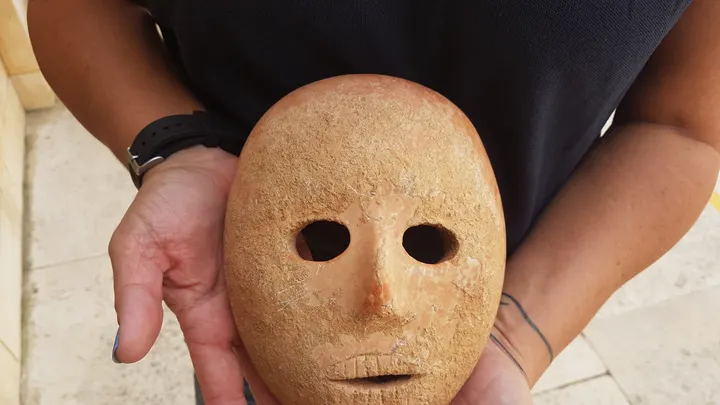
A rare stone mask discovered on Mount Hebron, more than 9,500 years old, will go on public display
A rare stone mask more than 9,500 years old, discovered on Mount Hebron, will go on public display at the Israel Museum in Jerusalem.
The mask made of Dolomitic limestone was unearthed by an archaeological team from the Civil Administration near the settlement of Pnei Hever.
Archaeologists date the stone mask to the Pre-Pottery Neolithic B period in the 8th millennium BC.
The mask may provide new insights into the religious beliefs of the prehistoric people who lived in that region.Archaeologists studying the mask believe it may represent an ancient deified ancestor figure or primitive supernatural being. The mask is also considered a highly significant religious artifact from a period about which relatively little is known.
📣 Our WhatsApp channel is now LIVE! Stay up-to-date with the latest news and updates, just click here to follow us on WhatsApp and never miss a thing!!

According to JNS, the newly discovered mask displays a highly refined design, emphasizing large eye sockets and an open mouth area. Notably, the mask’s teeth are carved in relief, likely deliberately crafted to resemble a human skull. It also features four strategically placed attachment holes that would allow it to be securely fastened to a person’s face or mounted on a pole during ceremonial rituals.
“This is an extraordinary discovery that reveals new insights into the spiritual and symbolic traditions of some of the world’s earliest Neolithic cultures in this region,” said Elie Borowski, curator of prehistoric antiquities at the Israel Museum. “The funerary context and skull-like aesthetics of the mask strongly suggest that it had highly sacred ceremonial purposes.”

The Israel Museum, which will display the stone mask, also announced that it will exhibit for the first time decorative wall tiles excavated from the site of the Tomb of David on Jerusalem’s Mount Zion. According to biblical tradition, the catacomb is believed to be the burial place of King David.
Cover Photo: Ronit Lupo of the Israel Antiquities Authority holds a 9,000-year-old stone mask recovered from thieves by the Antiquities Authority Theft Prevention Unit in southern Hebron Hills, during a press conference in Jerusalem on Nov. 28, 2018. Photo by Yonatan Sindel/Flash90.
You may also like
- A 1700-year-old statue of Pan unearthed during the excavations at Polyeuktos in İstanbul
- The granary was found in the ancient city of Sebaste, founded by the first Roman emperor Augustus
- Donalar Kale Kapı Rock Tomb or Donalar Rock Tomb
- Theater emerges as works continue in ancient city of Perinthos
- Urartian King Argishti’s bronze shield revealed the name of an unknown country
- The religious center of Lycia, the ancient city of Letoon
- Who were the Luwians?
- A new study brings a fresh perspective on the Anatolian origin of the Indo-European languages
- Perhaps the oldest thermal treatment center in the world, which has been in continuous use for 2000 years -Basilica Therma Roman Bath or King’s Daughter-
- The largest synagogue of the ancient world, located in the ancient city of Sardis, is being restored











Leave a Reply